Sydney’s Jazz Age Criminal Queens Ruled the Streets With Razors
Knives and unlicensed grog were their weapons of choice.
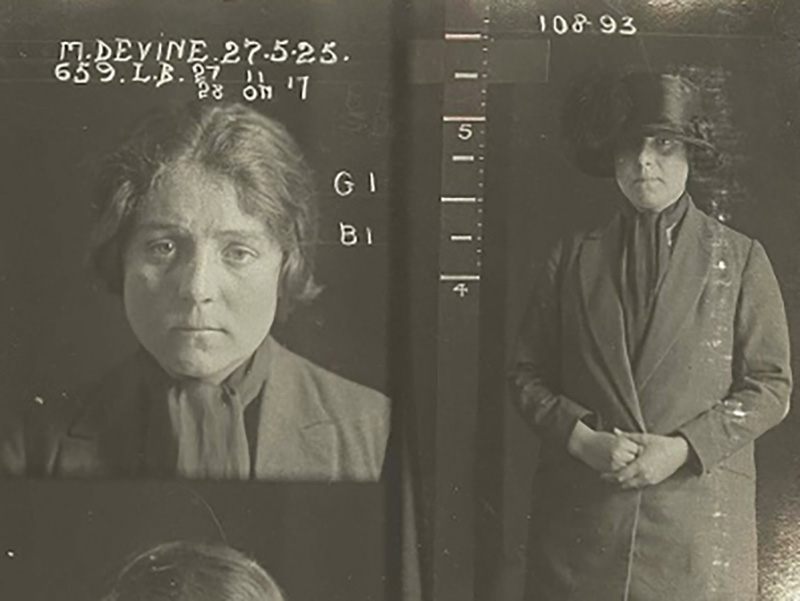
The mugshots of Tilly Devine. (Photo: Courtesy State Archives of New South Wales)
In the 1920s, Australia was under the dominion of British King George V. But on the streets of Sydney, two female monarchs ruled the people. Tilly Devine, the Queen of Waterloo and Kate Leigh, the Queen of Surry Hills were at the head of two razor gangs that terrorized the city and took trouble with them wherever they went.
Before life threw them together, Devine and Leigh were both busy preparing themselves for careers in crime. Tilly Devine had started life as Matilda Twiss, becoming a sex worker on the streets of England as a young teen. It was in London, in 1917 that she met an Australian serviceman, Jim Devine, and took the name she would come to be known for. After Jim moved back to Australia in 1919, Tilly followed, continuing her work in Australia. Prostitution was a dangerous day-job, however, and Tilly racked up 79 convictions in just five years.
None of these convictions had resulted in serious penalty until early 1925 when she received two years’ jail for wounding a man named Sydney Corke, with a razor. Corke recounted the events to the police, attesting, “she said ‘There he is, the bastard’’…rushed at me and swung her arm … and I felt a sting in my hand … and when I looked at it the blood squirted in my face.”

Tilly Devine’s police record. (Photo: Courtesy State Archives of New South Wales)
For her actions Tilly Devine became known as “The Worst Woman in Sydney.” Her time in the State Reformatory did turn her life around, but not in the way the state might have hoped. With the hope of being safer and making more money, Devine moved on from prostitution to become a madam.
Meanwhile another queen was being crowned, in a different part of Sydney. Kate Leigh was Australian-born, the eighth child in a family that had neglected her throughout her early years. At 13 she had become pregnant, and then married two years later. The marriage gave her the last name she kept for life, but itself lasted only a few years. Leigh was a petty criminal before becoming a madam, sly-grog seller, and the head of her own gang. A little more street-smart perhaps than Devine, she was rarely convicted of the violence she was almost certainly taking part in.
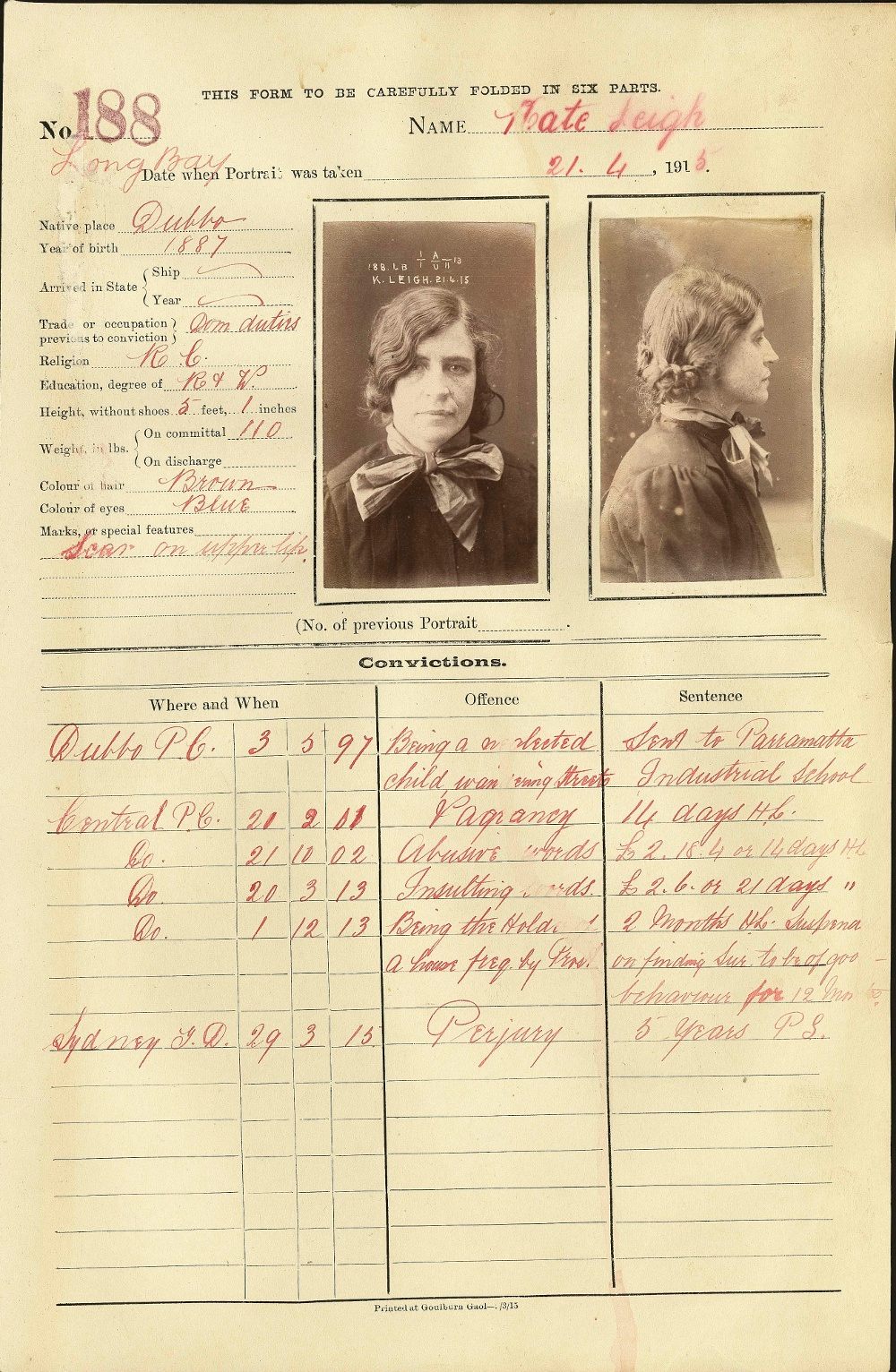
Kate Leigh’s mugshots and prison form. (Photo: Courtesy State Archives of New South Wales)
It was the introduction of several vice-quashing laws that made these women’s criminal careers thrive. Street prostitution was prohibited in 1905 in the southeast Australian state of New South Wales, making sex workers move towards brothels in greater numbers. That same law however, only stated that men could not benefit financially from the sale of female sex work. This left a loophole for madams, and presented an opportunity for both Leigh and Devine.
Leigh, for one, had further criminal aspirations. Between 1906 and 1927 three laws were passed that dampened legal recreational activities, banning the sale of cocaine by chemists, criminalizing off-course horse betting and mandating early closure of bars. But people still wanted to drink, bet and snort coke. Leigh was there to help, peddling alcohol in over 20 sly-grog establishments, offering illegal betting and selling coke on the streets via women masquerading as prostitutes.

Downtown Sydney, 1920. (Photo: State Records NSW/Public Domain)
The two women collected men and women around them, to create gangs that helped run their businesses, provide protection and sell their product. They were to become known as razor gangs, for their weapons of choice. In 1927 the NSW Parliament legislated against concealed firearms, enforcing serious punishments on those carrying pistols or handguns. Razors, cheap and easily purchasable, became the weapon du jour for Sydney gangs.
Violence between the gangs was at a head in the 1920s, with a personal enmity growing between the two ladies. Their henchmen would often attack one another if they saw each other in the street and Leigh and Devine would send their people to trash each other’s brothels and grog shops. Afterwards they’d tattle on each other to the police.
The ladies were not above violence themselves. In 1929 the Canberra Times reported that Devine had an altercation with one of Leigh’s friends, Vera Lewis. The paper added that “Lewis alleged that Devine scratched her…and getting her teeth on her little finger would not let go until the police intervened.”
Despite her violent ways, Devine’s life was going well. She’d made substantial investments in real estate and became known for her finery, Pomeranians and fabulous parties. Leigh, too, was famous for her fur and diamonds, financed by her thriving grog trade. The money, allegedly, was not all going on herself however. After Leigh ended up back in court for more criminal behavior, the Barrier Miner reported on a softer side of the Sydney Queen, commenting that a detective who followed her one day “found her bound on a noble errand of supplying food to unemployed.”
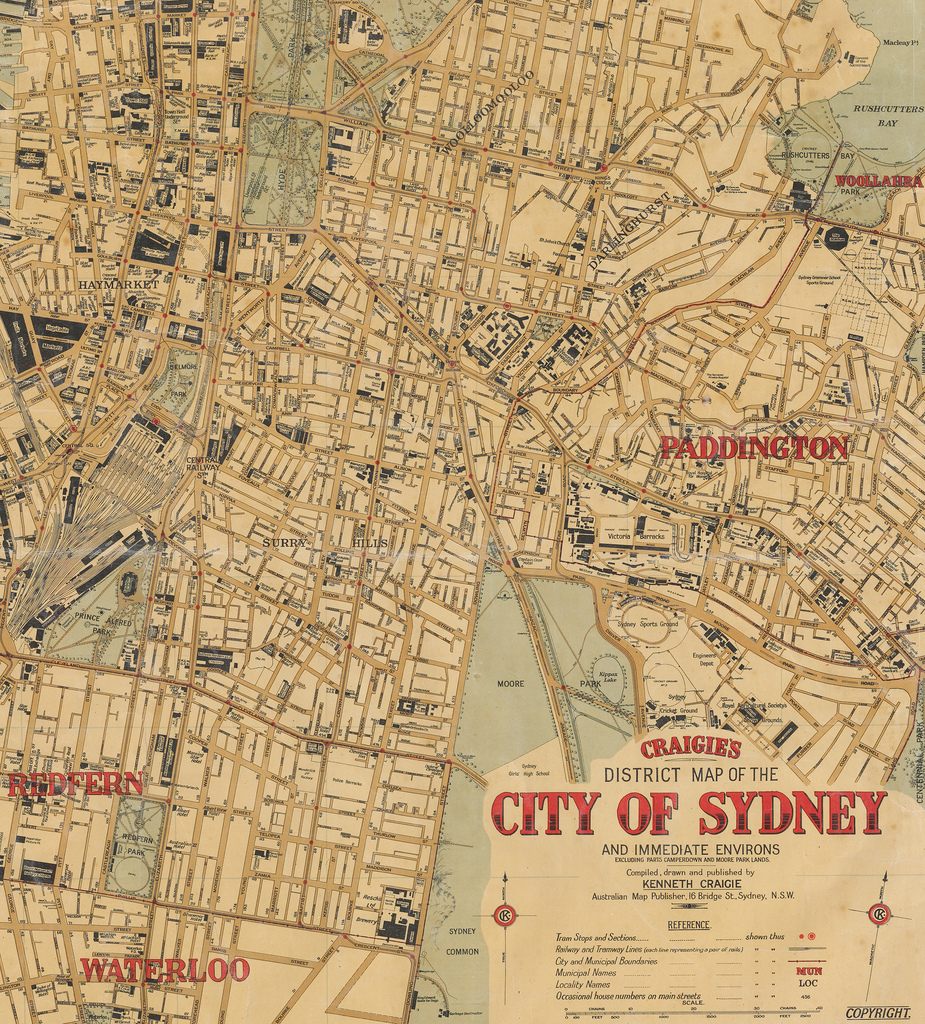
A map showing the razor gang areas of Sydney, c. 1927. (Photo: State Records NSW/Public Domain)
She may have been generous, but a reminder was to come that Leigh was still a gangster. An altercation between her right-hand man Gregory Gaffney and Frank Green (Tilly’s henchman) saw bloody battle come right to Leigh’s doorstep. Green had been set upon by Gaffney earlier the day and had retreated to Tilly’s home to rest and await the next attack. Jim Devine laid in wait, shooting a man he saw come over his fence. Jim Devine reported his side of events to the police, stating that he found the man he had shot was Gaffney and had brought the wounded man some brandy. Gaffney died but Jim Devine wasn’t convicted, having successfully claimed self-defense.
Though prostitution and alcohol weren’t top concerns of the police, the burgeoning violence was. Laws were introduced to curb gang association and punish those who carried razors, but the gang violence continued. Police Commissioner McKay spoke with Devine and Leigh in 1935, threatening to bring down the full powers of the police against them both, unless they cooperated with reducing violence and cocaine distribution. The two women agreed.
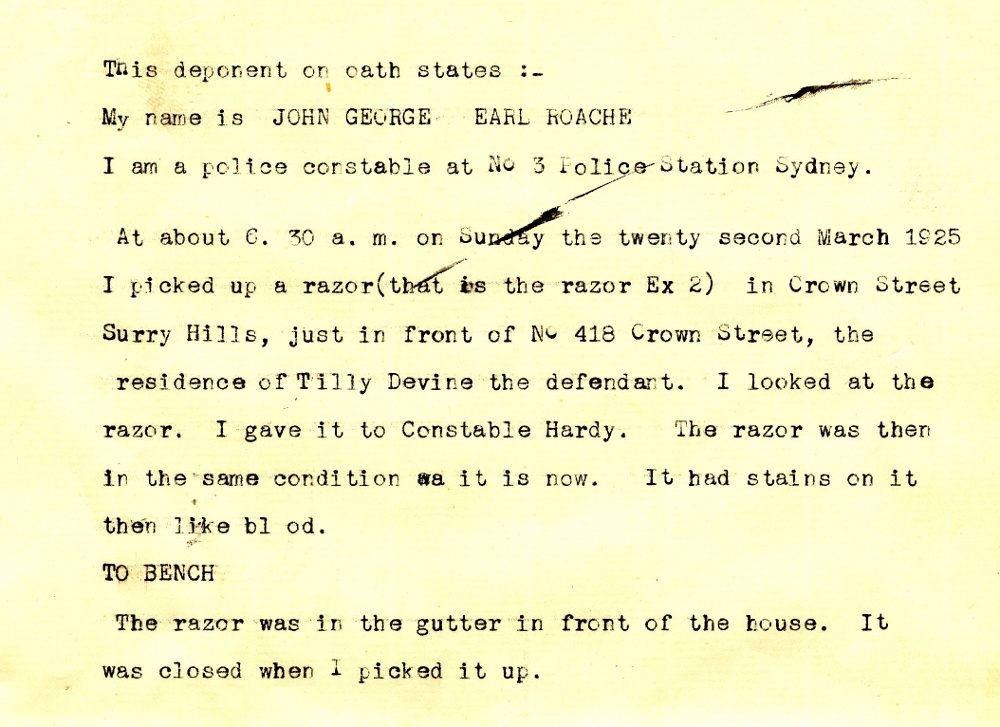
Part of the police evidence about finding a blood-stained razor in the streets of Surry Hills. (Photo: Courtesy State Archives of New South Wales)
The Second World War saw plenty of business for both women, with servicemen from the US filling their brothels and buying their beer. But after the war things began to go downhill for the two feuding favorites of the underworld. Devine’s marriage had always been violent, with the Brisbane Courier reporting in 1933 that her husband “was charged in the Central Police Court to-day … with shooting at Matilda Devine … with intent to murder her.” In 1944 the violence had become too much for her and Devine divorced her husband.
Ultimately, Sydney’s criminal queens were brought down by something much more mundane than razor battles: tax law. The Tax Department came after Leigh first, charging her with unpaid taxes and fines dating more than a decade old. Following these fines she was found bankrupt. In 1955 Devine was handed down a £20,000 fine. Though her business continued afterwards, it began to diminish. Her last brothel was sold in 1968.
Leigh died in 1964, after living out her old age dependent on her nephew. Though she had faded fiscally, Leigh still had many admirers, and her funeral was attended by 700 mourners. The press remembered the wily woman not only for her crimes, but for her patriotism and generosity to the poor. Six years later, Devine died in a hospital—not from a razor wound or after a nasty altercation, but from the bronchitis that had plagued her for 20 years.




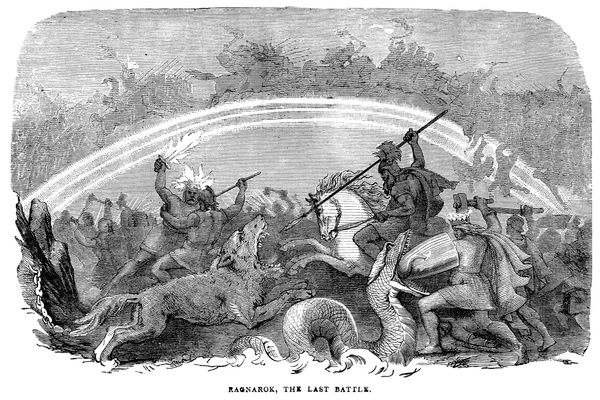











Follow us on Twitter to get the latest on the world's hidden wonders.
Like us on Facebook to get the latest on the world's hidden wonders.
Follow us on Twitter Like us on Facebook